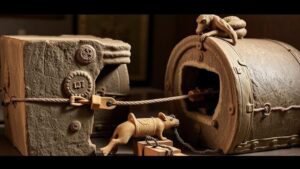Selling Restored Bottles and Ceramics Found in Dump Sites
Selling Restored Bottles and Ceramics Found in Dump Sites
The practice of recovering, restoring, and selling bottles and ceramics unearthed from historical dump sites is both a lucrative and enriching venture. This article outlines the process, significance, and considerations that come with this unique trade, focusing on techniques, market dynamics, and ethical implications. By examining both practical guidelines and real-world examples, we aim to provide a comprehensive overview for those interested in this niche market.
The Process of Recovery and Restoration
The initial phase involves the careful recovery of objects from dump sites, which often serve as time capsules, revealing histories hidden beneath layers of refuse. e sites can vary widely, from old all-purpose landfills to specialized trash pits. The following steps are typically involved in recovery:
- Site Selection: Research historical locations to identify potential dump sites, such as those from the 19th and early 20th centuries that are known for yielding valuable artifacts.
- Permits and Permissions: Always seek legal permissions to excavate from these sites, as many are protected under local laws.
- Excavation Techniques: Use non-intrusive digging methods to minimize damage to artifacts. Screen debris carefully to avoid overlooking smaller items.
Once recovered, the restoration process is essential to maintaining the integrity and value of the items. Restoration may involve:
- Cleaning: Employ specialized cleaning techniques appropriate for the material to avoid degradation.
- Repair: Use conservation-grade adhesives to mend any breaks or chips while ensuring visible repairs are minimized.
- Documentation: Keep records of findings, restoration work, and provenance to enhance the items authenticity and appeal.
Market Dynamics and Valuation
The market for restored bottles and ceramics can be competitive, driven by aesthetics, historical significance, and collector demand. Factors influencing market value include:
- Age and Rarity: Items from specific periods, such as pre-Prohibition bottles, are often more valuable due to their rarity.
- Condition: The degree of restoration impacts value. Well-restored items with minimal repaints or repairs tend to fetch higher prices.
- Market Trends: Understanding current collector interests and trends, such as the rising appreciation for Art Deco ceramics, can provide insights for timing sales.
According to a recent survey conducted by the Antiques Trade Association, ceramics and bottles from the 1900s can sell from $50 to over $1,000 depending on their condition, rarity, and market demand.
Real-World Applications: Case Studies
Consider the case of a collector who specializes in soda bottles from the mid-20th century. After a successful excavation project in an old bottling plant area, they unearthed numerous unique bottles. Post-excavation, they restored the most striking pieces and used online platforms, like Etsy and specialized antique websites, to reach a wider audience. Their ability to leverage social media led to a significant increase in sales, exemplifying how modern channels can enhance traditional selling methods.
Another pertinent example is the restoration of ceramic pieces from Victorian-era dump sites. A participant in local archaeological digs collected sherds of plates and bowls. By employing careful restoration techniques, they created an inventory that attracted local antique enthusiasts and garnered attention from collectors on online auction platforms. Their items were often featured in blogs dedicated to historical preservation and restoration, enhancing their visibility and value.
Ethical Considerations
Engaging in the restoration and sale of artifacts can raise ethical questions, particularly about the potential for exploitation or irresponsible excavation practices. It is vital for collectors and sellers to:
- Adhere to Legal Standards: Familiarize themselves with local laws regarding excavation and sale of found objects.
- Consider Conservation Efforts: Participate in or financially support preservation initiatives to maintain the historical integrity of dump sites.
- Educate Consumers: Share knowledge of the historical context of retrieved items, fostering appreciation for their significance beyond mere aesthetic value.
Actionable Takeaways
For individuals interested in entering the market of selling restored bottles and ceramics from dump sites, several actionable steps can be taken:
- Start with Research: Learn about historic dump sites in your area and gain insights into what types of artifacts are most sought after.
- Build Your Restoration Skills: Attend workshops or courses on ceramic repair and glass restoration to enhance your expertise.
- Create an Online Presence: Use social media or e-commerce platforms to showcase your items, share restoration processes, and engage with potential buyers.
By combining passion for history with careful recovery and restoration practices, aspiring sellers can find a fulfilling niche in the market of restored bottles and ceramics, contributing to both cultural preservation and their own entrepreneurial endeavors.



